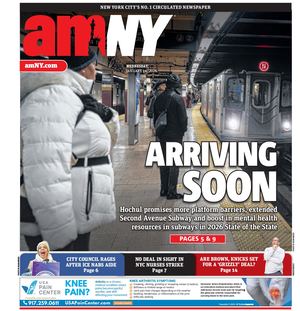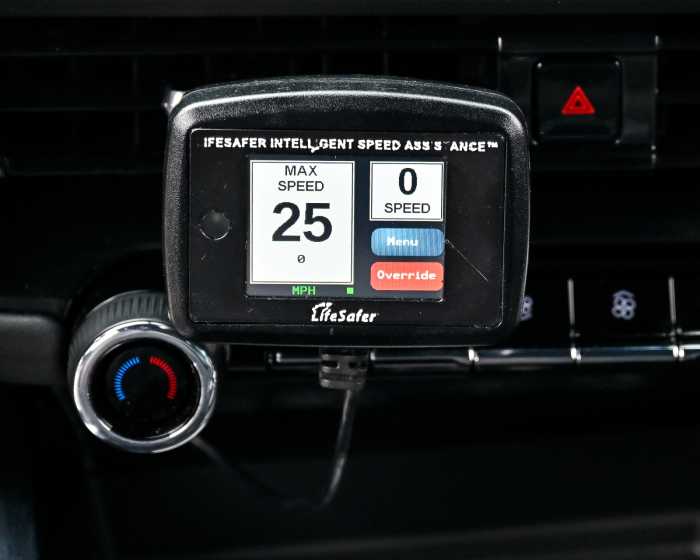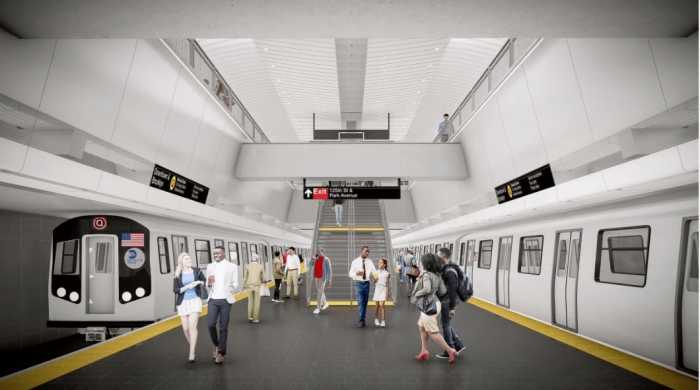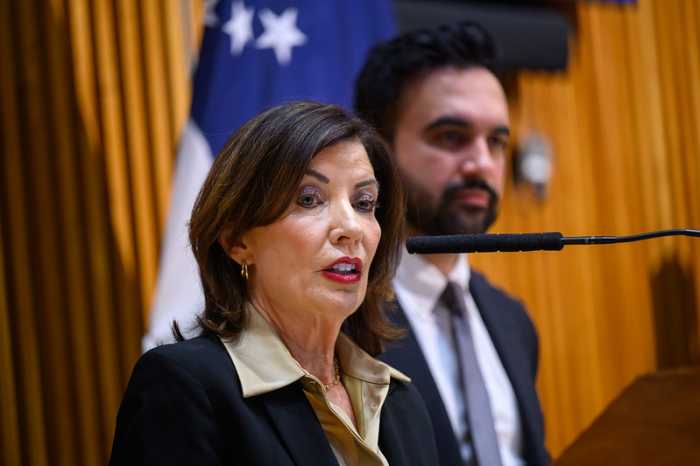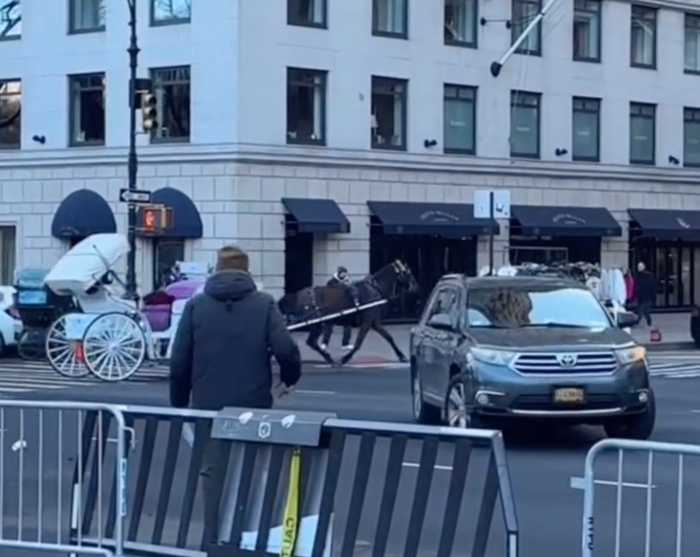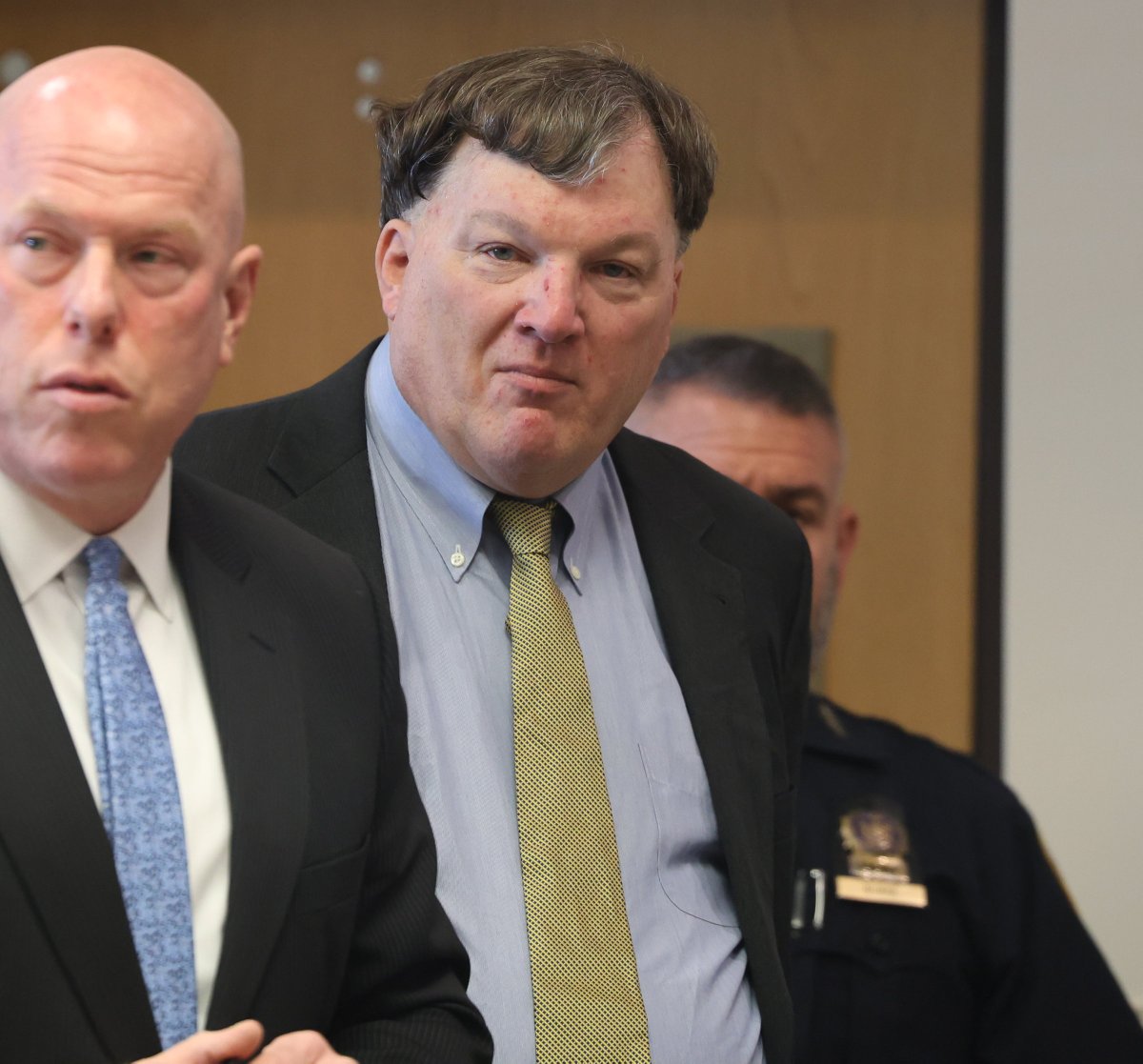
The congestion pricing plan from Gov. Andrew Cuomo’s Fix NYC panel will mostly impact wealthier commuters in the New York City region, according to a new report.
The analysis, by the advocacy group Tri-State Transportation Campaign, breaks down commuting patterns by the region’s state Senate and Assembly districts and shows that a majority of commuters — by a 30-to-1 ratio in many districts — rely on mass transit to commute to work.
And the small minority of people who drive into the busiest parts of Manhattan typically have above-average incomes relative to their districts.
Nick Sifuentes, the executive director at the campaign, reasoned that given the costs associated with owning a car, and driving and parking in Manhattan, there would be fewer lower-income commuters doing so in the 140 districts that were analyzed.
His organization and others will be rallying in Manhattan on Tuesday in support of the proposal from the governor’s panel as state lawmakers begin discussing its merits.
“It’s very, very clear that the vast majority of New Yorkers use public transit and would be positively impacted by congestion pricing — or that they don’t even enter the toll zone at all other than once in a while,” said Sifuentes. “There’s a clear right decision here and the data is pretty unequivocal on that.”
Driving in Manhattan south of 60th Street could cost a one-way toll of $11.52 under the plan from the Fix NYC panel, which consists of planning experts, representatives of business nonprofits, MTA board members and past and present elected officials. Cashless tolling would be instated in the pricing zone. Trucks would pay $25.34 and taxis and for-hire vehicles could see surcharges of $2 to $5 per ride.
Even in some of the city’s transit deserts, there is an income gap between commuters who drive and those who take transit, according to Tri-State’s analysis.
In Assembly District 45, which includes parts of neighborhoods of south-central Brooklyn, like Midwood, Gravesend, Brighton Beach and Manhattan Beach, the average income of commuters who drive into work is $45,140, compared to the $34,146 average income of a rider of public transit.
There are similar numbers in other areas such as Senate District 12 in Queens. The district, which spreads over Astoria, Sunnyside and Long Island City, is home to mass transit commuters with an average income of $36,788, compared to drivers with an average income of $41,986.
Still, the majority of people living in more car-dependent areas, such as eastern Queens and Staten Island, would not be subjected to the new tolls.
In Queens’ Assembly District 24, served by Assemb. David Weprin, 4.2 percent of district commuters would pay a congestion charge to get to work every day. There, 76 percent of residents don’t commute into Manhattan’s central business district for work. In state Senate District 24, which encompasses a large swath of Staten Island, 5.8 percent of commuters would be subjected to the new fee.
Cuomo has been quoted describing congestion pricing as “an idea whose time has come,” a way to combat Manhattan’s increasingly clogged streets while also raising what could be another $1.5 billion in annual revenue for the MTA, which has spiraled into a service crisis of delayed trains and slow buses.
While opposition from state lawmakers killed two congestion pricing proposals under Mayor Michael Bloomberg, the Tri-State Transportation Campaign hopes that its commuter data will help sway skeptics.
“The Tri-State data sheets confirm what we know already, which is that a very small fraction of New York’s commuters are going to be facing a new charge under the Fix NYC plan,” said Alex Matthiessen, who is the campaign director of Move NY, the coalition that presented the most recent congestion pricing plan several years ago, and who supports the Fix NYC proposal.
There is, however, a caveat with the data: it’s old. The Census Bureau last collected commuter patterns between 2006 and 2010. Sifuentes believes not much has changed since that period — except for a significant uptick in commutes via for-hire vehicles like Ubers and Lyfts, which had not yet arrived in New York.
Some of the fiercest opponents of congestion pricing remain unconvinced. Weprin, whose district includes parts of Auburndale, Bayside, Floral Park, Fresh Meadows and Jamaica Estates, believes the data is too narrow. He’s opposed to the Fix NYC plan and said he’d prefer a non-resident income tax for people who work in the city but live outside of the five boroughs.
“It doesn’t consider all the people — not necessarily everyday workers — who are going to restaurants, theaters, medical appointments, visiting relatives — and not to mention disability community that really can’t navigate the subways,” Weprin said.
Mayor Bill de Blasio has softened his opposition on congestion pricing in light of the new plan, though he’s still voiced concerns about the proposal including that the MTA might not see all of the revenue from the tolls.
Nicole Gelinas, a senior fellow at the Manhattan Institute, believes that New York is ripe for congestion pricing, though she said there were further details to work out, such as spending reforms at the MTA.
